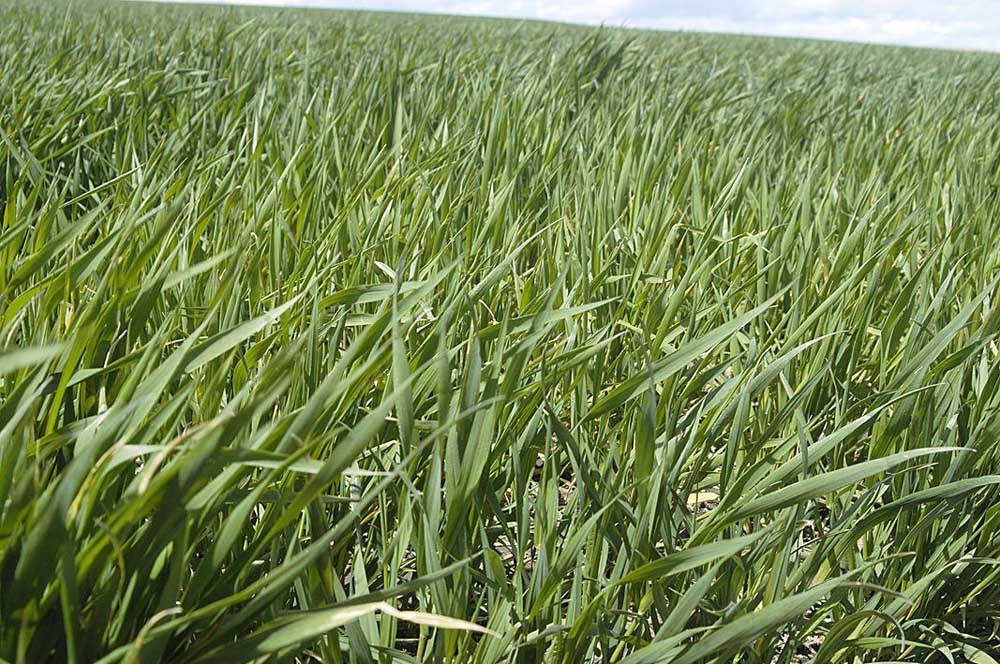Unauthorized GMO wheat found in Montana
Published 7:53 am Friday, September 26, 2014

- USDA says unauthorized genetically modified wheat was found in Montana this summer. It had the same traits as gmo wheat found last year in Oregon, but is genetically different.
Unauthorized biotech wheat was found growing this summer in Montana but it’s not the source of an earlier unauthorized release in Oregon, according to USDA.
Several acres of wheat volunteers genetically engineered by the Monsanto Co. to withstand glyphosate herbicides were found growing at a Montana State University research center in July, an agency official said Friday.
The site was used for field trials of “Roundup Ready” wheat between 2000 and 2003, said Bernadette Juarez, director of investigative and enforcement services at USDA’s Animal and Plant Health Inspection Service.
The “Roundup Ready” genetic trait is the same as the one discovered by an Eastern Oregon farmer in the spring of 2013, but the wheat is otherwise genetically different, she said. The agency has closed its investigation into that incident without reaching firm conclusions as to its source.
The Oregon biotech wheat volunteers were not found near a previous field trial site and show genetic characteristics associated with a wheat breeding program, Juarez said.
Biotech wheat at MSU’s Southern Agricultural Research Center near Huntley, Mont., is less genetically diverse, she said. Its discovery was similar, however: a field was sprayed with glyphosate but the volunteers persisted.
Juarez said the agency has launched an investigation into the Montana incident but isn’t ready to say whether the biotech wheat volunteers are the offspring of several generations of the crop that repeatedly sprouted for more than a decade after the field trials.
The volunteers were growing on several acres but at a low density, she said. The acreage is smaller than in Oregon, where the biotech wheat grew on a portion of the farmer’s 125-acre field.
Because the Montana incident occurred at he site of a previous field trial, the USDA does not expect that foreign wheat buyers will stop imports of U.S. wheat, said Juarez.
In 2013, exports to Japan and South Korea were temporarily halted until a genetic testing protocol was established to screen for genetically engineered wheat.
“We remain confident wheat exports will continue without disruption,” she said.
The investigation into the unauthorized release in Oregon has ended without any firm conclusions about the source of the biotech wheat, though USDA continues to believe it was an isolated incident and none of the crop entered commerce.
Testing has not found any genetically engineered traits in the U.S. wheat supply, Juarez said.
Investigators from APHIS followed numerous leads and were able to rule out several possible sources for the escape, she said. Their investigation generated about 13,000 pages of paperwork, which will be released to the public with names and other personal information redacted.
No enforcement action against Monsanto or any other party will be taken in connection with the Oregon incident, Juarez said.
The agency will be examining other field trial sites in multiple states and reviewing its policies for keeping biotech crops contained, she said.
The Center for Food Safety, a non-profit group that’s critical of the USDA’s biotech oversight, sees the new discovery in Montana is “alarming,” said George Kimbrell, an attorney for the group.
“I don’t know if it’s worse or better if they’re unrelated,” he said. “It indicates either two escapes or a bigger escape.”
Michelle Hennings, executive director of the Washington Association of Wheat Growers, said a backlash to the Montana incident among foreign wheat buyers is unlikely due to the genetic testing protocols.
“I don’t think there is going to be a reaction,” she said.





